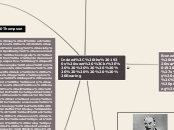Indeed, the 1920s were
Roaring
Technology:
The advancements in technology in the 1920s were impactful, innovative and affordable.
Household Appliances



The Iron
The Refrigerator
The Washing Machine
Transportation
Ocean Liners
Railways

Ford Model T
The Ford Model T was made with better quality than its predecessor, the model A. It introduced a more affordable way of transportation for the average family and allowed for laborers to travel father distances to find work.
Economy:
After the first world war,
the 1920s saw Canada's
economy grow substantially,
and more people were making
money.

The Assembly Line
Henry Ford Introduced the assembly line
as a way to mass produce products, in his
case being automobiles. This drastically
cut down production times by hours.
Branch Plant Economy
Many foreign countries did not want to pay the
tariffs and taxes that came with selling their
products in Canada. Their solution: Branch Plant Economy. Now, their products could be made in
Canada, by Canadians. This increased the job
market, made products less inexpensive, and helped grow Canada's economy altogether.
The Stock Market
The economic boom of the 1920s was largely due to the idea of credit. As more people were making money, they took out large loans with the feeling of being able to pay it back easily with their wages. When the stock market was introduced, citizens felt they would earn money by essentially doing nothing. While we later saw the Stock Market crash, there is no doubt that it heavily increased the Canadian economy of that decade.
Politics:
The 1920s helped to shape
the Canadian Identity.
The Chanak Affair
In 1922, Turkish forces threatened the
British troops stationed in Turkey.
Britain sought help in Canada for the war
in Chanak, but prime minister William
Lyon Mackenzie King initially declined.
He left the decision to the Parlament, but
before they would reach a verdict, the
crisis passed.
This helped to solidify
Canada's independence as its own country.
Halibut Treaty
1923 was the year in which Canada signed its first
treaty independently as its own country.
Before this, it was Britain who signed all agreements
on behalf of Canada.
This was a huge step towards Canada's isolation
as its own country.
Entertainment:
The 1920s were a turning point for modern entertainment.
Hockey Night in Canada

A young Foster Hewitt
In 1923, the first radio broadcast of a hockey game was aired.
Foster Hewitt was assigned the radio broadcaster, and he is heard every Hockey Night in Canada to this day.
Films
While movie theaters already existed
before the 1920s, they were becoming
more accessible to citizens. With this
came the introduction of sound films,
commonly known as "talkies", in
contrast to the already popular silent film.
Slowly, whilst still being made, the
popularity of the silent film began to
diminish.

Charlie Chaplin
Charlie Chaplin was the face everyone
knew in relation to films in the 1920s.
Despite the decline in popularity of
silent films, Chaplin, through his
distribution company United Artists,
wrote and starred in many silent films
Until the 1960s. He bacame a household
treasure for decades.
Dances
The Charleston
Swing Dancing
Music
Social:
The 1920s saw growth in
the acceptance of diversity.
The Impact of the Modern Woman

Women's Pride
Women in Canada were finally able to vote.
Additionally, they were being hired and were
able to support their families. While a lot more work needed to be done, the voice of women were finally beginning to be heard.

The Persons Case
Before 1929, women in Canada were denied
most basic rights. The Persons case, officially
devided on October 18th, 1929, allowed for
women to sit in the house of the senate.
Oftentimes referred to as "electrical servants", household appliances made everyday tasks easier and faster and were revolutionary for their time.

The 1920s is often referred to as
the "Jazz Age". Jazz music became
the soundtrack of the 20's with the
technological advancements in
radio broadcasting. This era sparked
ideas of fluidity and equality as well
as focusing on the carefree aspects
of life.
The Radio
The radio was revolutionary from both a technological perspective and an entertainment perspective. The radio became apart of a mass market, and radio broadcasting changed the entertainment industry forever. It also opened up more opportunities for modern technology.
Alexa Thompson

William Lyon Mackenzie KIng



Bessie Smith

Esther Jones, also
known as 'Baby Esther"

Helen Kane

Flapper Dancers


